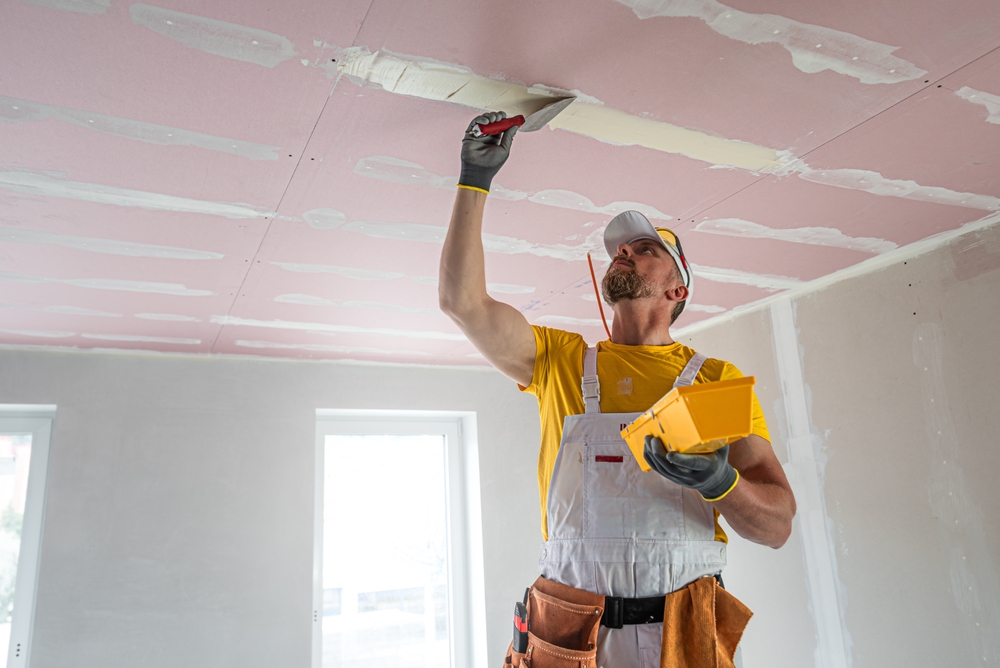

Lioncrest Publishing
Pop quiz: Who is in the best position to finance a construction project? If you answered, “The owner,” you’d be right. While the owner normally obtains funds from a bank to pay for construction, they are not the ones who finance the project.
The subcontractors are the ones who end up financing the project.
That’s right! Those who put out labor, material, and then wait to be paid are the ones financing the project. Those who have to make payroll every week regardless of whether the check from the general contractor shows up are the ones backing the project.
How is it possible for the companies with the least amount of resources to end up financing the project? Subcontractors are only paid after they perform their work. The owner and the general contractor receive the value of the subcontractor’s work before they have to pay for it. How can this even happen?
Enter the pay when paid clause.
What’s a Pay When Paid Clause?
The pay when paid clause means that the general contractor has no obligation to pay the subcontractor until the general contractor receives payment for the subcontractor’s work from the owner.
In the not-so-distant past, when a general contractor hired a subcontractor, they promised to pay the subcontractor for their work. Now the general contractor promises to pay the subcontractor, but only after they are paid by the owner. Now the subcontractor is waiting for some event that they have no control over (the owner paying the general contractor) in order to get paid. Just
performing the work in a good and workmanlike manner (the get-shit-done tribe!) is not enough to be paid these days.
Ensuring that you have submitted all the required documents with your pay application is only the first step to being paid on time. If there’s a problematic pay when paid clause in your subcontract, it puts the fate of your timely payment outside of your control.
There are many things out of the subcontractor’s control that can delay the payment from the owner. What if the general contractor does not timely submit its pay application? What if bad work performed by another subcontractor stops all payments from the owner to the general contractor?
The question then becomes, how long can you afford to go without pay for the work you already performed?
Provision Language Examples
Below are some examples of pay when paid clauses and how to change them to negotiate a better position for your company. This way not all of the risk of nonpayment from the owner falls on you.
Here is language that you want to watch out for and replace:
General Contractor and Subcontractor agree that the owner’s payment to General Contractor is an absolute condition precedent to General Contractor’s obligation to pay Subcontractor any progress or final payment. Subcontractor expressly agrees that it retains the risk of the owner’s insolvency or inability to pay General Contractor.
Now here is how you should change the clause to give yourself some protection:
General Contractor and Subcontractor agree that the owner’s payment to General Contractor is an absolute condition precedent to General Contractor’s obligation to pay Subcontractor any progress or final payment. If the owner does not pay General Contractor within 30 days of receiving Subcontractor’s pay application, and Subcontractor is not the reason the General Contractor is not being paid, the General Contractor will pay Subcontractor the amount due for that pay application by the 40th day after the pay application was submitted to the General Contractor.
Here is another problematic example you would want to replace:
The General Contractor shall pay the Subcontractor each progress payment within seven working days after the General Contractor receives payment from the owner. If the General Contractor does not receive payment from the owner, General Contractor has no obligation to pay the Subcontractor.
Here is some suggested language to make the provision a little fairer:
The General Contractor shall pay the Subcontractor each progress payment within seven working days after the General Contractor receives payment from the owner. If the owner fails to pay the General Contractor within 30 days of the General Contractor receiving Subcontractor’s pay application, and Subcontractor is not the reason General Contractor is not being paid, the General Contractor will pay for Subcontractor to file its lien for the unpaid amount, up to $2,000.
Here is another ridiculous example:
Payment of General Contractor by owner for Subcontractor’s Work is a condition precedent to General Contractor’s obligation to pay Subcontractor. Subcontractor understands and acknowledges that Subcontractor relies on the credit of the owner, not the General Contractor, for payment of Subcontractor’s work.
What this is saying is, the subcontractor is supposed to rely on the owner for payment! The subcontractor doesn’t have a contract with them nor would they have the chance to examine their financial records to determine if they wanted to rely on their financial condition for payment of their work. I have an idea! What if the subcontractor approached the general contractor and said, “Why don’t you get me the owner’s financial information so I can make an informed decision?” Ha! The general contractor will never give you that information, which is why that sentence needs to be removed, along with some other changes. Here is a revision to the example above:
Payment of General Contractor by owner for Subcontractor’s Work is a condition precedent to General Contractor’s obligation to pay Subcontractor. If the owner does not pay the General Contractor within 30 days, of receiving Subcontractor’s pay application, and Subcontractor is not the reason the General Contractor is not being paid, the General Contractor will pay Subcontractor 50% of the amount Subcontractor is owed for that pay application, and the remaining 50% will be paid once the General Contractor receives the funds from the owner.
A Way Out
If you signed a subcontract that contains a pay when paid clause, not all hope is lost. There is a way out. If you have submitted a pay application, and it’s been forty-five days, and you have not been paid, and you are not the reason the general contractor has not been paid, you can get out of the pay when paid clause.
Here is what you need to do: send a letter to the general contractor stating that you do not want the pay when paid clause to be enforced against you, and demand payment. That’s it! I know it
sounds kind of ridiculous, but it’s true. I don’t make the laws; I just learn them and pass the information on.
At SubcontractorInstitute.com, you can download the letter you need to send to the general contractor to stop the pay when paid clause from being enforced against you. It is called the Escape Clause Letter.
Negotiate for Yourself
You should walk into every subcontract expecting to negotiate. You have to understand that the subcontract that is received for the project is only the first offer. This means it has everything the general contractor could want and more.
The general contractor does not expect you to agree to everything in the subcontract, but the general contractor will be accepted if you do. The general contractor expects you to negotiate the subcontract and is surprised and concerned when you do not.
In the next chapter, I’ll encourage you to stop doing what you’ve always done by just signing a subcontract without negotiating.
| Key Points |
| 1. Pay when paid clauses make your timely payment condition upon an action you cannot control. The owner must pay the general contractor in order for you to be paid. |
| 2. You should not have to take all the risk of nonpayment from the owner. Negotiate pay when paid provisions. |
Karalynn Cromeens is the Owner and Managing Partner of The Cromeens Law Firm, PLLC, with over 17 years of experience in construction, real estate, and business law. A published author and passionate advocate for contractors, she has dedicated her career to protecting the businesses her clients have built. Karalynn is on a mission to educate subcontractors on their legal rights, which inspired her books Quit Getting Screwed and Quit Getting Stiffed, as well as her podcast and The Subcontractor Institute.

